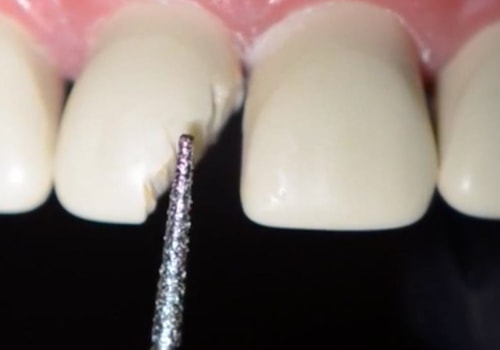This is by far the most common reason people visit the dentist. Like cleaning, whitening is a relatively less cumbersome process. Bonding is a conservative way to repair slightly chipped, discolored, or crooked teeth. During tooth adhesion, a white filling is placed on the tooth to improve its appearance.
The filling “sticks” to the tooth and, because it comes in a variety of shades of tooth color, closely resembles the appearance of your natural teeth. The dental bond can also be used for dental fillings instead of silver amalgam. Many patients prefer bonded fillings because the white color is much less noticeable than silver. Bonded fillings can be used on front or back teeth, depending on the location and extent of tooth decay.
Joining is less expensive than other cosmetic treatments and can usually be completed in a single visit to our office. However, the bond can stain and is easier to break than other cosmetic treatments, such as porcelain veneers. If it breaks or splinters, tell your doctor. Usually, the joint can be easily repaired or repaired in a single visit.
A bridge replaces missing teeth with artificial teeth, looks great and literally closes the gap where one or more teeth may have been. The bridge can be made of gold, alloys, porcelain, or a combination of these materials and adheres to surrounding teeth for support. Crowns are a restorative procedure used to improve the shape of the tooth or to strengthen a tooth. Crowns are most often used for teeth that are broken, worn out, or have parts destroyed by tooth decay.
A crown is a “cap” attached to an existing tooth that usually covers the part of the tooth above the gum line. In effect, the crown becomes the new outer surface of the tooth. Crowns can be made of porcelain, metal, or both. Porcelain crowns are most often preferred because they mimic the translucency of natural teeth and are very strong.
Crowns or onlays (partial crowns) are needed when there is not enough dental strength left to maintain a filling. Unlike fillings, which apply restorative material directly to the mouth, a crown is made away from the mouth. The crown is created in a laboratory from the unique impression of your tooth, allowing a dental laboratory technician to examine all aspects of the bite and movements of the jaw. The crown is then sculpted just for you, so that the bite and jaw movements work normally once the crown is placed.
Traditional dental restorations, or fillings, are usually made of silver amalgam. The strength and durability of this traditional dental material makes it useful for situations where restored teeth must withstand the extreme forces that result from chewing, often in the back of the mouth. Newer dental fillings include ceramic and plastic compounds that mimic the appearance of natural teeth. These compounds, often called composite resins, are generally used in front teeth, where it is important to have a natural appearance, but they can also be used on posterior teeth depending on the location and extent of tooth decay.
In addition to tooth replacement, implants can be used to anchor dentures, especially lower dentures that tend to move when you talk or chew. For patients with removable partial dentures, implants can replace missing teeth to give them a more natural-looking smile. This is one of the most commonly performed procedures in a dental office. First, your dentist can use one of many different methods to find out what type of tooth decay, if any.
This may include a dye for tooth decay and x-ray detection. If there is a cavity at the surface level, your dentist will use silver metal or white composite materials to fill the hole and even out the chewing surfaces. This means that the tooth decay will no longer grow and the tooth will seal at the same time. If your teeth have any type of trauma that has left them cracked or broken, they can also be filled.
If your office doesn't offer dental adhesion, you're falling short because it's one of the most demanded procedures in dentistry today. Second, dental adhesion is dental fillings, which are also used to repair decayed teeth due to tooth decay or dental trauma. The difference with dental fillings is that the restorative material used does not look as natural as dental adhesion. Teeth whitening has become an extremely popular dental treatment in recent years and is certainly a procedure that every office should offer.
Many patients turn to professional teeth whitening as a simple, affordable and effective way to brighten their smiles. Teeth whitening works to remove stains and yellowing from teeth and is a simple procedure performed in a dental office or with a take-home kit. Teeth whitening is a simple solution to keeping stains and yellowing at bay, as the results last for a year or even longer. Veneers are an excellent long-term solution, as they are robust and do not stain.
Whiteness and shape can last up to 10 years if properly cared for. Basically, Invisalign is the modern replacement for metal braces. Invisalign is typically used 22 hours a day and replaced every other week to ensure that teeth are gradually moving into place. .
.







